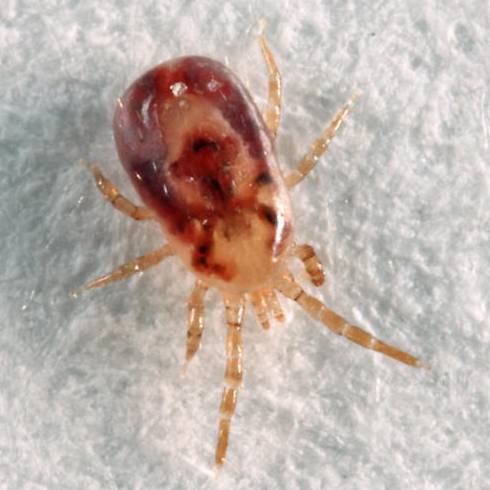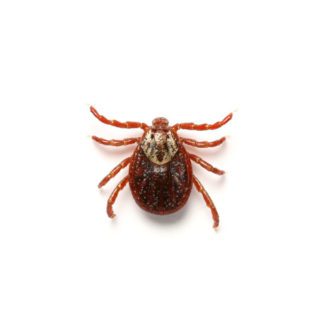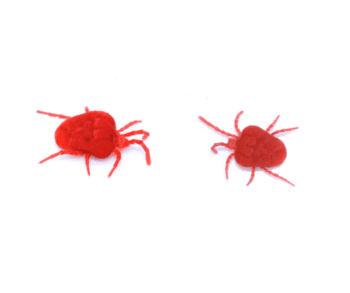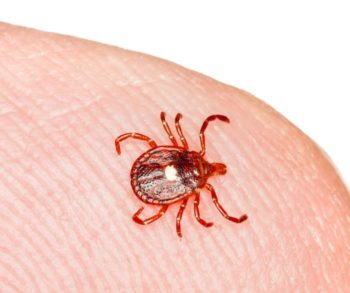Bird Mites in Suffolk County & Nassau County
Bird Mites are incredibly small – typically less than 1mm in the adult stage – and because of that they can be difficult to spot. Most people don’t think about them, since they’re primarily found on the skins of birds like chickens and pigeons. They can develop from egg to adult in about a week and live for up to several weeks after that.
Bird Mite Habitat
Unlike other mites and ticks, bird mites live almost entirely off the blood of birds. They use them as hosts and are known for populating inside their nests. Bird mites are especially fond of warmer climates, so they’re especially active in the spring and early summer. And they’re found throughout the United States, but can also be seen in Africa, Asia, Australia, and the Islands of the Pacific.
Bird Mite Behaviors, Threats or Dangers
Bird Mites are often overlooked, especially since they don’t rely on humans for hosts. They can still bite, resulting in irritation and the possibility of allergic reaction. If you work with birds you are at risk of bird mites, but the same applies if an infected bird has nested in your attic, chimney, or within small cracks of your property. If that’s the case, Suburban Exterminating mite exterminators can help clear out the infestation.
Need help with Bird Mite control?
Need Expert Advice?
Leave your information below and we'll be in touch soon!
"*" indicates required fields
*During normal business hours. After hours calls will be returned the next business day.
Bird Mite FAQs
Why Do I Have Bird Mites in My House?
Bird mites may end up in your house if birds build nests nearby and then leave. These parasites often search for new sources of food when the nests they inhabit are disturbed or destroyed, leading them to venture into nearby structures. Bird mites could also hitch a ride on clothing or pets, going unnoticed because of their small size.
What Do Bird Mites Look Like?
Bird mites are tiny pests that are barely visible to the naked eye. They belong to the same family as spiders and ticks, and when fully grown they have eight legs. Since these pests feed on blood, they have a sharp mouthpiece that can pierce through skin. Bird mites also have oval-shaped bodies that are usually white or translucent, but may turn red or blackish after feeding.
What Are the Signs of Bird Mites?
Detecting a bird mite infestation can involve noticing several signs, such as:
- Skin Irritation: Unexplained itching or red, irritated skin, especially if you’ve been near areas with bird nests.
- Visible Mites: Sometimes, these tiny pests might be visible crawling on surfaces, particularly in areas where birds or their nests have been present.
- Bird Activity: Increased bird activity around your home or in nearby trees or roofs can indicate a potential infestation.
- Bite Marks: Small, red bites resembling mosquito bites that appear suddenly and without an obvious cause.
- Feathers or Nest Debris: The presence of feathers, nest materials, or bird droppings in or around your home, signaling possible bird habitation, which could lead to bird mite infestation.
If any of these signs are observed, especially in combination, it might be wise to contact an exterminator for an inspection.
What Damage Do Bird Mites Cause?
While bird mites don’t cause severe health issues for humans, their presence can still create nuisances and affect overall well-being, particularly for those sensitive to their bites or allergic reactions. Not only that, but these pests can also cause major discomfort for pets such as skin problems, stress, and feather loss.
How Do You Prevent Bird Mites?
Preventing bird mites involves taking measures to deter birds from nesting near or in your home and minimizing potential entry points for these pests. Here are some steps to prevent bird mites:
- Bird Control: Discourage birds from nesting by using deterrents like netting, spikes, or sound devices in areas where they tend to gather. Remove bird nests promptly, if safe and legal to do so.
- Seal Entry Points: Inspect your home for any openings or gaps that birds or mites could use to enter. Seal off these entry points, including cracks in walls, gaps in roofs, or broken vents.
- Regular Cleaning: Keep your surroundings clean, especially areas prone to bird activity. Regularly remove bird droppings, feathers, and nesting materials.
- Professional Help: If dealing with a persistent bird or mite issue, seek help from pest control professionals who can safely and effectively handle infestations and advise on prevention methods.
By minimizing bird access to nesting sites and securing your home against potential entry points, you can significantly reduce the risk of bird mite infestations.
How Do I Get Rid of Bird Mites?
Professional services offer the most effective solution for treating a bird mite infestation due to their expertise and resources. Trained professionals possess the knowledge to accurately assess the extent of the infestation, identify the source, and implement targeted strategies for eradication. Moreover, professionals can address underlying issues such as bird control measures to prevent future infestations.
Can Bird Mites Hurt Me?
Bird mites, while generally not directly harmful to humans, can cause discomfort and skin irritation if they come into contact with people. These mites primarily feed on the blood of birds, but if there are no hosts nearby, they may also bite humans, causing itchiness or allergic reactions.
What to Do If You Have Bird Mites
Think you may have bird mites? Don’t let them disrupt your peace of mind. At Suburban Exterminating, our professional bird mite exterminators are equipped with the expertise and tools needed to quickly eliminate these pests. With over 60 years of experience, you can trust us to deliver reliable results and fast, friendly service. Contact us today for a thorough inspection and tailored solutions to rid your home of these unwelcome visitors.





